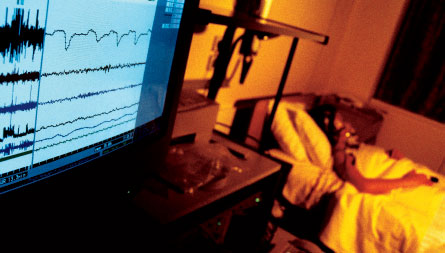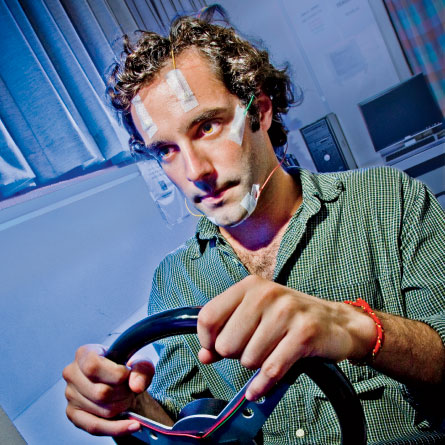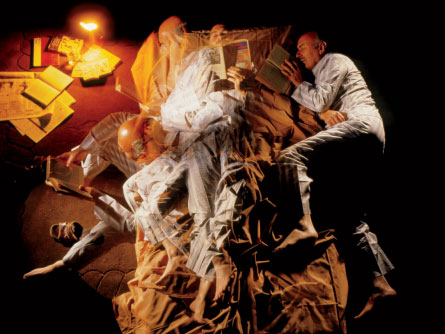
© LaurentIn sleep, the body may be still, but the brain is active.
In a lab at MIT, a small black mouse named Buddy sleeps alone inside a box. A cone resembling a satellite dish sits atop his head. But the dish doesn't receive signals from outer space. Instead it sends transmissions from deep inside Buddy's brain to a bank of computers across the room.
Scientists like Jennie Young eavesdrop on the transmissions, essentially reading Buddy's mind, or at least that part of his mind occupied with a recent trip along a Plexiglas track littered with chocolate sprinkles. Young and her colleagues in Susumu Tonegawa's laboratory are monitoring nerve cells inside the hippocampus, one of the brain's most important learning and memory centers. Some of the cells in the sea horse - shaped hippocampus fired bursts of electrical energy as Buddy moved along the track. As he sleeps in his black box, those same cells spark to life again, replaying progress along the track in fast-forward or rapid reverse.
By recording the slumbering Buddy's brain cell activity, the scientists hope to glean clues to one of biology's greatest mysteries: the reason for sleep. Although sleep is among the most basic of behaviors, its function has proved elusive. Scientists say sleep's job is to save energy, or to build up substances needed during waking or to tear down unneeded connections between brain cells. Some emphasize sleep's special role in learning and memory. Others suggest that sleep regulates emotions. Or strengthens the immune system. And some scientists believe sleep is simply something that emerges naturally from having networks of neurons wired together.



Comment: Although the author's support for vaccination is questionable at best, he does make an important observation about the disproportionate spread of the disease. But are "disparities in health conditions" the cause, or are we seeing the result of something more sinister, such as an ethnic specific virus?